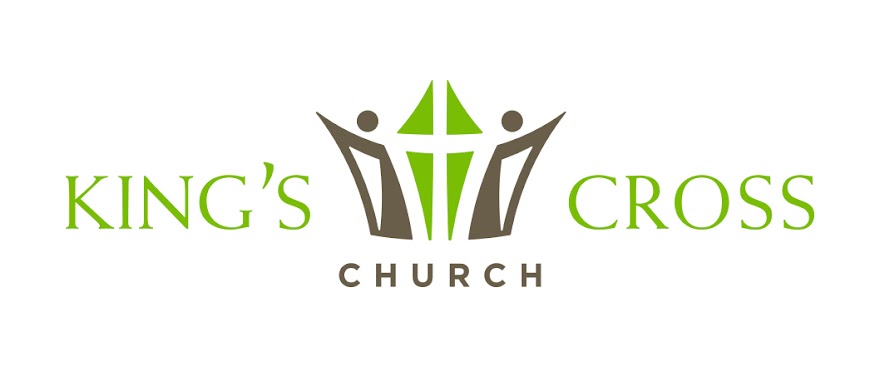Mission/Vision
KING’S CROSS CHURCH exists to glorify God and enlarge His Kingdom by gathering regularly to proclaim and celebrate the Gospel of Jesus Christ, yielding to the authority of God’s Word as illuminated by the Holy Spirit and summarized in the historic Christian Creeds and Reformed Confessions, partaking together of Christ’s presence in the Sacraments, providing opportunities to love and serve one another in Community, equipping the saints for Ministry to those who are lost and hurting, both locally and globally, and preparing them to cultivate Shalom (peace and well-being) wherever God calls them to serve.
Friday, March 11, 2016
Lectionary Thoughts: March 11
LEVITICUS 14: The God of Scripture a master-storyteller. Almost all of the literary devices that we enjoy today in both fiction and non-fiction first appeared in the "story of stories", the Bible.
According to vocabulary.com, "Foreshadowing is an advance sign or warning of what is to come in the future."And this being true, Leviticus 14 provides us with an amazing foreshadowing of the Jewish Temple's destruction in 70 A.D.
God's prescription for houses infected by "leprosy" had three phases. Phase I: After the contents of the house had been removed, a priest would visit the house in question to examine it for disease (Lev. 14:36). Phase II: The priest would return to the house for a second inspection. If the disease remained, then the house would be scraped and stones removed from the house (Lev. 14:39-40). Phase III: The priest would return for a third examination and if the disease remained, the entire house would be destroyed "stones and timber and all the plaster of the house"(Lev. 14:43-45).
Fast forward 2000 years to the time of Jesus' first advent. Phase I: Jesus, who was a priest "according to the order of Melchizedek" (Heb. 7:17) visited God's "house" (the Temple) near the beginning of his ministry, examined it and removed certain diseased elements from it (John 2:13-22). Phase II: Jesus made a second inspection of the God's house near the end of his earthly ministry, found it diseased and once again forcibly removed some of the diseased elements (Matt. 21:12-13). Phase III: Jesus, just as he had promised the Council in Matt. 26:64, visited Jerusalem in a cloud of judgment (e.g. Isa. 19:1-2) determined that God's house was still diseased and leveled the Temple and the holy city "stones and timber and all the plaster" via the might of Titus and the Roman army.
Just as Jesus said in Luke 24, all of the Old Testament is about him. Even the hard to read passages about leprosy, open sores and the demolition of houses.
And, for what it's worth, Leviticus 13:40-41 are two of my all-time favorite verses in the Bible. And if you've ever seen my forehead (actually, more of a fivehead) you will understand why ;).
HT: James B. Jordan and Peter J. Leithart.
Wednesday, March 2, 2016
Lectionary Thoughts: March 2
 JOHN 21: This chapter could be read as the second act of three act play.
JOHN 21: This chapter could be read as the second act of three act play.Act I: Jesus calls his first disciples and promises them that if they follow him, he will make them "fishers of men" (Mark 1:17).
Act II: After a night of fruitless fishing, Jesus directs these same men to cast their net on the right side of the boat producing a haul of fish that strained the nets to the point of breaking (John 21:6-11). And recall that in the Old Testament, the sea/sea creatures were associated with the Gentile nations/Gentiles.
Act III: As Peter preaches to the Gentile Cornelius and his household the Holy Spirit falls upon them and they are gathered into the family of God via baptism (Acts 10:44-48). Although Paul is known as the "Apostle to the Gentiles", it was Peter who landed the first "fishes" from the Gentile sea just as Jesus had foretold and foreshadowed.
Tuesday, March 1, 2016
Lectionary Thoughts: March 1
 LEVITICUS 4: In this chapter we have the rather strange instructions concerning the sacrifice that priests were to offer when they sinned "bringing guilt upon the people." The sacrificial bull was to be taken "outside of the camp" to a "clean place" and burned with fire on "the ash heap." Hmm. What in the world...?
LEVITICUS 4: In this chapter we have the rather strange instructions concerning the sacrifice that priests were to offer when they sinned "bringing guilt upon the people." The sacrificial bull was to be taken "outside of the camp" to a "clean place" and burned with fire on "the ash heap." Hmm. What in the world...?We know that Jesus is the fulfillment of every Old Testament sacrifice. Like the bull in Leviticus 4, Jesus was sacrificed (crucified) outside of the camp (Jerusalem.) And like the sacrificial rite in Leviticus 4, "the blood of Jesus Christ cleanses us from all sin" (1 John 1:7). How, you ask, did the rite in Leviticus 4 "cleanse"? Well, as our pioneer forefathers well knew, when you render animal fat with fire and mix it with ashes you make, wait for it.....soap. Soap!? Yep, soap.
Jesus, the one who was sacrificed on a hill outside of the holy city is the fulfillment of the sin offering in Leviticus 4, and the answer to David's, and every penitent sinner's prayer, "Wash me and I shall be whiter than snow" (Psalm 51:7).
Subscribe to:
Posts (Atom)

